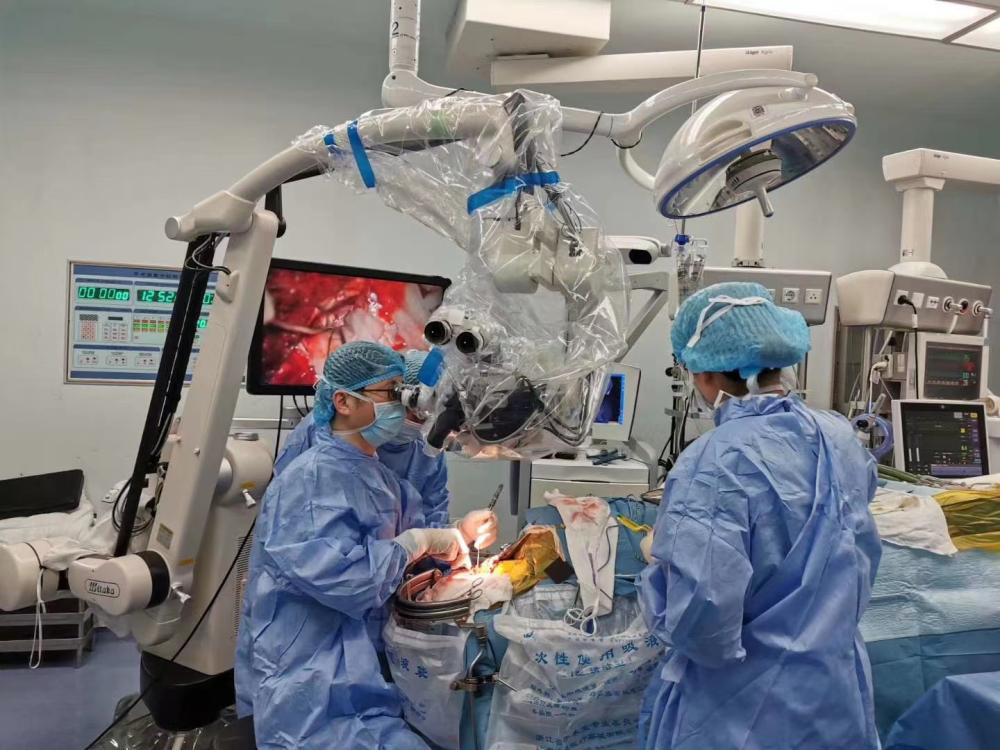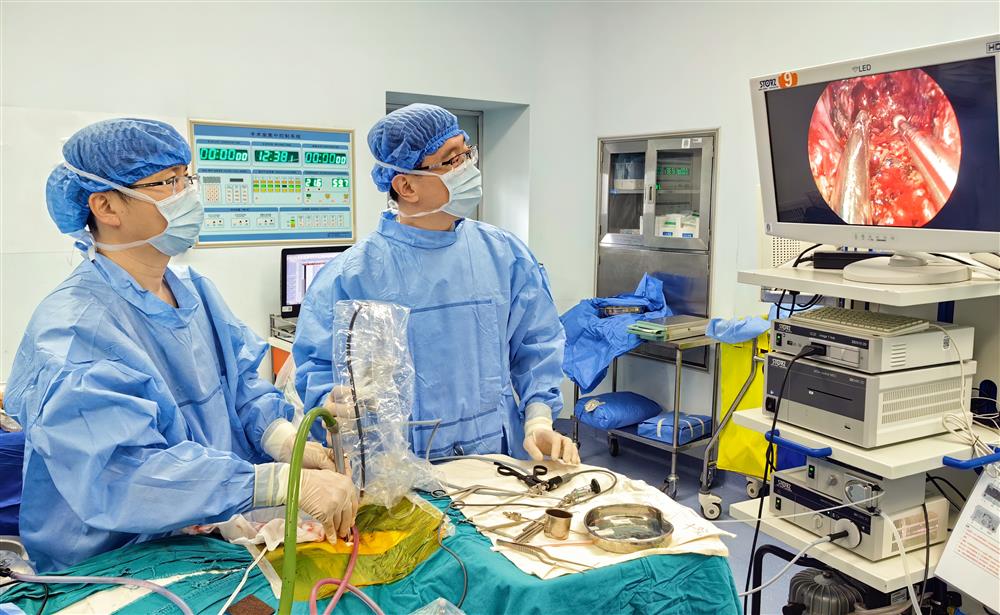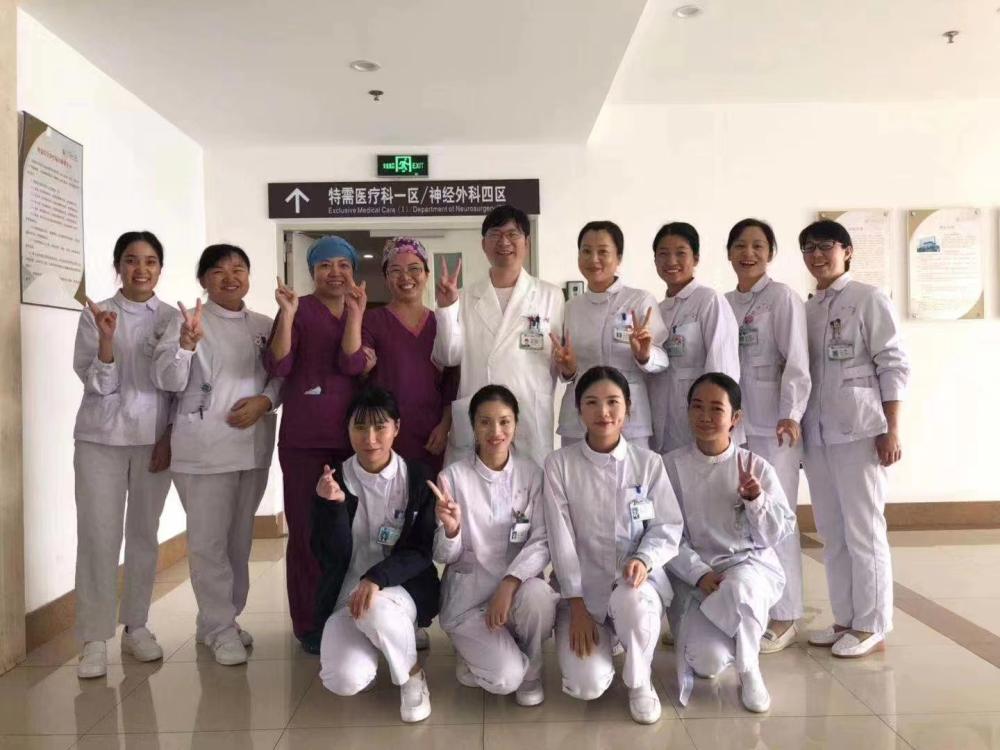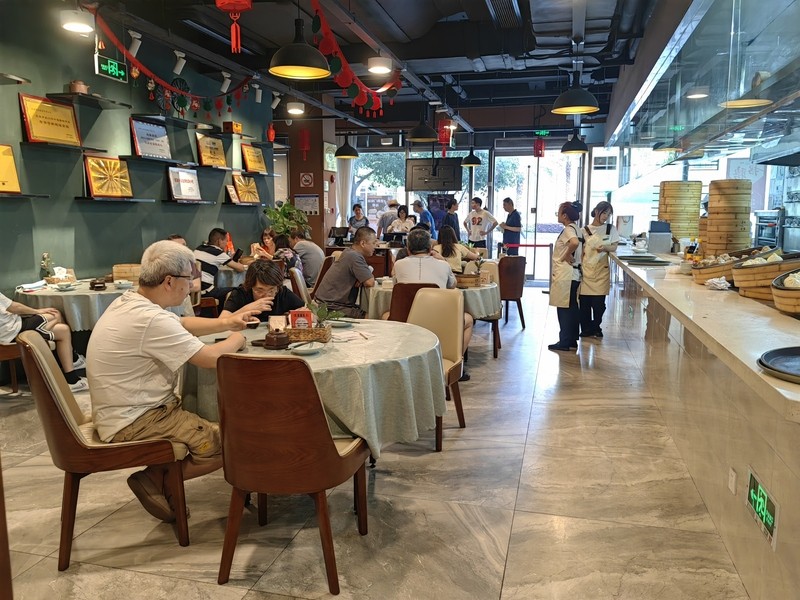The Shanghai team has opened up a path of hope in the "forbidden zone of life", competing against the diseases in their minds. Doctors | patients | life
Mrs. Kelly has always believed that she has a "monster" in her head. She often has headaches, gradually affecting her vision until she becomes hemiplegic. After being diagnosed by a surgeon, she has a cerebral aneurysm. After suffering for decades, she decided to undergo surgery to drive away the "monster" in her head.
American neurosurgeons performed surgery on her, hoping to eliminate two life-threatening aneurysms and remove the posterior cerebral artery malformation. However, in the heart wrenching surgery, Mrs. Kelly unfortunately passed away, and the "monster" won.
This documentary report titled "Mrs. Kelly's Monster" won the Pulitzer Prize for Writing in 1979. Today, 44 years later, the reporter handed it to Gao Liang, the director of the neurosurgery department at Shanghai Tenth People's Hospital. He carefully read it and said, "This is the dilemma that foreign predecessors faced in an era of unfavorable conditions. Surgery was even more difficult at that time. Today, we have 80% control over surgery of the same difficulty."
Recently, "Neurocritical Care Medicine" edited by Gao Liang and others will be published under the auspices of the Neurosurgery Branch of the Chinese Medical Association, showcasing the latest achievements of Chinese doctors in the field of neurocritical care medicine. In recent years, Gao Liang has led a medical team of over 30 doctors and over 90 nurses from ten hospitals, persistently exploring interdisciplinary diagnosis and treatment in neurosurgery and critical care medicine, and creating new models in the treatment of brain diseases. He has found new paths in some areas that were originally "impassable", bringing good news to Chinese patients and inspiring international peers.
Highlight the skull base surgery under a microscope. Respondents provide pictures
There are "monsters" in the head
In China, many patients are tormented by "monsters" in their minds. The incidence rate of brain tumors in China is about 7 per 100000. Among malignant tumors, children are the first cause of death, and adults are the tenth. Every year in China, the number of new cases of cerebrovascular disease reaches 3.94 million, with 2 million deaths from cerebrovascular diseases and approximately 28 million surviving stroke patients.
The brain is the "headquarters" of the human body. Neurosurgery requires direct surgery on the human brain. It is extremely difficult and risky to make a move in the "forbidden zone of life". Neurosurgery is therefore known as the jewel on the crown of surgical medicine, and can be regarded as the forefront of human struggle against diseases.
In the neurosurgery department of the Tenth Hospital, there are many patients and their families who come from various places with admiration. There are brain injuries caused by high-altitude falls, road accidents, and more, stroke bleeding, cerebral infarction, brainstem bleeding, as well as various brain tumors. Patients seek medical attention everywhere and eventually come here. Gao Liang received a group of patients one after another, communicated candidly and comprehensively, and found ways to compete with various "monsters" in his mind.
The treatment methods of neurosurgery mainly include traditional microsurgery, interventional therapy, etc. Among them, microsurgery is an arduous battle. The longest surgery with high brightness took 23 hours.
That is a 28 year old young man with an intracranial hemangiopericytoma, which is 7.5 centimeters in size. Even worse, the location of the tumor is very poor, very deep, located at the base of the skull. The local hospital does not recommend craniotomy surgery, but after 5 years of delay, the patient's condition worsened, with hemiplegia, unclear consciousness, blurred consciousness, and frequent jet vomiting.

"The nature, location, and size of the tumor, at least these factors, determine the difficulty of surgery," Gao Liang said. For example, hemangioblastoma and hemangiopericytoma have a particularly rich blood supply and can cause bleeding at the slightest touch, making surgery difficult. The deeper the tumor is located, the more nerves and blood vessels there are like spider webs. If it damages the nerves, it can lead to serious sequelae and even endanger life. As for the size of the tumor, the larger it is, the more difficult it is to treat. "The largest tumor I have ever had is 16 centimeters. Doctors cannot remove the tumor as a whole like picking oranges, so they can only use the method of ants' moving, gradually removing it in pieces."
"The difficulty of cutting-edge surgery is very high," Deputy Chief Physician Zeng Tao told reporters. Tumors in areas such as the brainstem are truly "pulling the whole body together.". On the operating table, doctors can only approach and reach the relevant area accurately through the small window opened on the head, passing through a very small gap, and using high-precision navigation equipment. A surgery requires extremely high physical strength, energy, flexibility and adaptability, as well as the courage and courage of a doctor.
This patient is dominated by three factors. But Gao Liang took over the patient and chose to challenge them together.
During surgery, highlight the right path under the microscope, approach the tumor, and be careful to avoid the dense surrounding nerves and blood vessels. When removing a tumor, one touch can cause bleeding, and one can only stop the bleeding while removing it. Even a second of relaxation can lead to massive bleeding.
The surgery lasted nearly 23 hours from 8am to just over 6am the next day, and it went smoothly.
Highlighting complex brain tumor surgery under endoscopy. Respondents provide pictures
Can you "come back" after the surgery
However, the success of the surgery was only a good start.
Some patients with severe traumatic brain injury and major neurosurgery have performed successful surgeries, but they passed away a few days later. The main culprit is complications of the body's organs. More than 20 years ago, as a skilled surgeon in the neurosurgery department of Huashan Hospital, Gao Liang felt very frustrated in the face of this situation.
Severe traumatic brain injury may cause lung problems, such as acute respiratory distress syndrome; It may also cause heart problems, kidney and liver function problems, abnormal coagulation function, etc; Various infections, as well as venous thrombosis and pulmonary embolism, may also occur.
That is to say, in order to rescue people from the hands of the Grim Reaper, in addition to high-quality successful surgery, strict intensive care is also necessary.

However, from the perspective of the medical education system, neurosurgery and critical care medicine are two separate disciplines. In most hospitals, neurosurgeons are mainly responsible for performing surgeries, and once completed, they are handed over to critical care doctors for management. Both types of doctors have their own specialties, but each has their own shortcomings: neurosurgeons cannot have a deep understanding of critical care medicine, and critical care doctors do not have much knowledge of neurology.
"Doctors are specialized, but patients' problems are comprehensive." Gao Liang realized that in order to improve the cure rate, it is necessary to draw on the strengths of others. From then on, he began to learn about respiratory pathophysiology and the use of ventilators, hemodynamic monitoring and treatment, organ function support, internal homeostasis assessment, infection monitoring and rational use of antibiotics, nutritional therapy, and early rehabilitation related knowledge and techniques.
After mastering the knowledge of critical care medicine, one will consider comprehensively whether the patient can "come back" after surgery? Is the surgery itself risky and lacks control, or is it difficult to survive due to weak perioperative life ability? If the surgery can be performed well and there is a rigorous intensive care system, many patients who were previously unable to return can be saved from the brink of death.
This discovery, like a beam of bright light in the darkness, made him feel excited and excited. About 20 years ago, Gaoliang gradually formed an interdisciplinary construction concept. In 2014, in order to forge a new path, with the support of many leaders and parties, Gao Liang left Huashan Hospital and came to Tenth Hospital, fully dedicating himself to the construction of an interdisciplinary platform combining neurosurgery and neurological critical care. Both software and hardware are indispensable.
Traditional neurosurgeons are busy performing surgeries, pursuing fast in and out, and paying attention to bed turnover. At the Tenth Hospital, neurosurgeons need to overlay their knowledge of neurological critical care and meticulously monitor them after surgery. What happens to the patient after surgery, the chief surgeon should handle it as soon as possible. In this way, treatment gradually becomes patient-centered.
Chen Songyu, a young doctor in the team, admitted that working as a doctor in the neurosurgery department of the Tenth Hospital is very difficult, and everyone has to take on dual responsibilities. But the advantage is that the patient's condition is directly controlled by the relevant doctors, which is beneficial for the patient.
When the Neurosurgery Ward of the Fourth District of the Tenth Hospital opened in 2018, Gao Liang took a photo with the medical staff from the Fourth District. Respondents provide pictures
The neurosurgery department of the Tenth Hospital gradually formed a strong combat team and created many miracles.
A 5-year-old boy in Jiaxing was hit by falling steel bars, with steel bars inserted into his head and sent to the Tenth Hospital. He fell into a deep coma, his right side paralyzed, and his life was in critical condition. Highlight the main knife and take out a steel bar that is 16 centimeters long. Afterwards, after undergoing intensive care of the nervous system, the boy passed the stages of shock, intracranial infection, and childhood epilepsy. Six months later, he was able to ride a bicycle, answer questions with clear thinking, and successfully entered a regular primary school. This caused a sensation in the local area.
A 16-year-old boy in Ningbo developed a cavernous hemangioma in the brainstem, which caused brainstem hemorrhage and confusion. The brainstem was once a forbidden area that doctors dared not touch, and it may be difficult to wake up after surgery. However, with the guarantee of neurological severity, recovery is good after total tumor resection. Over the years, the young man has been constantly reporting on his recent situation to Gao Liang. He is proud to say that he has learned how to cut his hair, and recently worked as a forklift at a construction site... all of these jobs require good neurological function.
Each patient is unique, highlighting the requirement for the team to carefully understand the patient's condition and provide a reasonable treatment plan. "If patients with coronary heart disease have cerebral hemorrhage and are still taking blood activating drugs, there will be problems."

During daily rounds, Gao Liang will carefully inquire about the patient's brain condition, the seven major systems of the body, and what they plan to do next. Not only focus on all aspects of the patient, but also set target values and achieve them. He said, "To control the condition, one should be like a train driver, always keeping the train on the right track."
This is a high requirement for the medical team. Indeed, the nurses here are also very difficult to handle. The head nurse of the ward, Li Juan, said that the condition of critically ill patients in neurosurgery is like a roller coaster, urgent, dangerous, and fast. For example, brain herniation and postoperative complications can sometimes occur within a few seconds, and an immediate judgment must be made. When the intensive care unit was first established, nurses had to receive professional training almost every day after work. Nowadays, there are also many senior nurses here, with young nurses accounting for only 10% -20%.
Every Wednesday, the neurosurgery department of the ten hospitals will provide training, and the team will analyze the gains and losses of recent cases together. Gao Liang will also share the latest treatment guidelines, consensus, and drug situation at home and abroad with the team. He asked team members to understand why the "guidelines" were being operated in this way, and under what circumstances they should not blindly copy the "guidelines", truly achieving the goal of knowing what it is and why it is. "Only with a wide coverage of medical knowledge can we grasp the main and secondary contradictions, as well as the factors that may become the main contradictions in the future, anytime and anywhere in the complex changes of medical conditions."
With the full support of the leaders of the Tenth Hospital, the Neurosurgery Department has established 26 NICU beds and 6 intensive rehabilitation beds in the Neurointensive Care Unit, equipped with professional equipment such as whole-body mobile CT. In the past 10 years, the number of beds in departments has increased from over 40 to 128 in 4 wards. High difficulty tumor surgeries in areas such as the thalamus, basal ganglia, and brainstem have evolved from difficult to treat to routine surgery, reducing mortality and disability rates for previously treatable conditions. According to statistics, the mortality rate of brain tumor cases in the Gao Liang team is controlled within 1%, of which 2/3 are difficult tumor surgeries; The mortality rate of severe and severe traumatic brain injury cases is controlled within 10%, which is significantly lower than the results of domestic and international epidemiological surveys.
The Trilogy of Saving Life, Awakening, and Rehabilitation
"Patients come from afar, and if the results are not good, the patients will be disappointed, and the medical team will also be frustrated. If a system can be established to control all problems well, then the results will be better. If we do a good job of summarizing, it will lead to a virtuous cycle, getting better and better."
In Gao Liang's mind, this "system" includes several aspects: surgery should be performed well, intensive care should be managed firmly, and one more thing: rehabilitation should be done early. This way, the probability of the patient passing the level is higher.
Last November, Mr. Zhang, a 65 year old man from Shanghai, was hit by a car when he crossed the road. He suffered a comminuted fracture of the thoracic vertebrae, damage to the brainstem, pulmonary edema, and unconsciousness. His family received a critical illness notice. The initial hospital performed tracheostomy, thoracic spine surgery, etc. on him, playing a crucial role in stabilizing vital signs. But Mr. Zhang continues to be unconscious, can he wake up, will he become a vegetative? The family held multiple family meetings to listen to expert opinions. On January 10th this year, Mr. Zhang was transferred to the Tenth Hospital for treatment.
Gao Liang told the family that the first stage is a life-saving period, so save your life first; The second stage is to provide the best nerve and brain repair methods to help the patient wake up. The third stage is to achieve gradual recovery, self-care, and seamless integration of the three stages, adjusting the plan at any time to control the dynamics and avoid derailment.
During the treatment process, Mr. Zhang adjusted his treatment plan accordingly for every slight change. And when every judgment of the Gao Liang team is fulfilled and the treatment plan is effective, it will bring confidence to the family.
"The patient may have been lying flat for half a year, and their muscles may have shrunk to the point where they can no longer stand up. If they wait for consciousness to clear up before training, it will be too late." Gao Liang instructed his partner and critical rehabilitation expert Chen Zhen to seamlessly connect with rehabilitation therapist Zheng Mingmeng from the Tenth Hospital, and to carry out early rehabilitation treatment before Mr. Zhang woke up. Chen Zhen turned him over on the same plane to prepare for trunk muscle recovery. Simultaneously carry out facial and tongue training, swallowing stimulation, and bed standing training.

After being unconscious for over two months, Mr. Zhang miraculously woke up. At first, the speech was unclear, and the words written were like tadpoles, unrecognizable. After three months of daily rehabilitation training, on April 4th of this year, Mr. Zhang wrote two clear and distinguishable words with a pen: "Thank you.".
Chen Zhen said that the brain has plasticity, and after injury, it can establish new neuronal connections through functional remodeling. In her view, neurosurgeons and critical care doctors snatch patients from the hands of death, but without rehabilitation intervention, patients will lose many functions and may not even be able to take care of their daily lives. Rehabilitation therapy can help patients recover and truly become a person with dignity and life value.
Half a year later, Mr. Zhang stood up for the first time and will continue to practice walking to return to a normal life.
In the eyes of many family members, Gao Liang always considers issues from the patient's perspective. For example, medication that is not conducive to the patient's subsequent recovery should be used with caution. When the patient is not yet awake, consider their future life and carry out rehabilitation treatment as soon as possible, without interruption during holidays. Even when patients leave the Tenth Hospital and encounter problems in their daily lives, Gao Liang still enthusiastically provides professional advice. In today's society where division of labor is becoming increasingly detailed and everyone is responsible for their own tasks, this spirit of truly patient-centered and enthusiastic service to patients is very valuable.
Bringing Light to More People
Neurosurgery exacerbates symptoms in medicine, coupled with early rehabilitation, like the Red Army's Long March, where a path was paved in a dead end. What pleased Gao Liang was that in the past, everyone thought there was no way ahead and patients could only wait for death. At least for some patients now, there is still a way to go. Although this road is difficult to walk and some people may unfortunately pass away while climbing snowy mountains or crossing grasslands, there is finally hope and a large number of patients have successfully survived.
But to completely overcome the disease, some difficult tumors still face numerous obstacles. There are three factors that affect the results: first, the pathological characteristics of the tumor itself. Some tumors, even if removed, are prone to recurrence, which is currently unchangeable in medical science; One is the ability of the responsible medical staff; Another factor is the cooperation and support of the patient's family members.
Facing the families of critically ill patients, Gao Gao chooses to objectively describe the condition, tell the family what he can do, what his experience is, and what the probability of success is. "Sincere and heartfelt communication is actually more likely to be recognized by patients and their families."
At the beginning of the 2020 epidemic, a woman from Yantai, Shandong, accompanied by her father, came to the Tenth Hospital. The huge tumor in the brainstem of the thalamus caused her to experience complete hemiplegia, hoarse voice, difficulty swallowing, and endangered life. My father said, "This is our last resort, and even if we die, we don't blame you." With the full trust of his family, Gao Liang underwent surgery for the most malignant glioblastoma, and advanced chemotherapy was given one month after surgery to suppress tumor recurrence. The patient has survived to this day, with clear consciousness, normal language, ability to walk independently, and only mild hemiplegia. Fortunately, the brain tumor did not recur and is currently in a tumor free survival state.
Regarding the improvement of the abilities of medical staff, Gao Liang believes that doctors need to learn for a lifetime. He will track the latest guidelines both domestically and internationally, and carefully read extensive literature. "In many literature, although most of the knowledge is already familiar to me, if there is one or two 'points' that I am not yet aware of and the verification is reasonable, then these efforts are worth it."
When he was young, Gao Liang wanted to become a good doctor, a doctor who could help patients solve problems. Nowadays, he has hardly rested for a year and is busy with patients. He returned to his hometown of Leqing, Zhejiang and went to various parts of the country for assistance and consultation. But the more you go, the greater the responsibility you feel. Craniocerebral trauma, cerebral hemorrhage, and cerebral infarction are commonly encountered in grassroots hospitals such as county-level hospitals, but due to limited medical conditions and level, patients often have no way to seek medical treatment. How many patients and families can be saved and benefited if more doctors can improve their medical technology?

With the continuous efforts of Gao Liang, the Eastern Neurological Critical Care Forum he advocated has been held for nine sessions; He promoted the establishment of the Neurosurgery Alliance of the Tenth People's Hospital Group Affiliated to Tongji University, attracting 90 hospitals nationwide to join in the past 8 years. On these platforms, ten smart digital medical centers have been established to assist in remote consultations, remote live rounds, surgical guidance, and more. Gao Liang shared his ideas free of charge, and he and the team of the Tenth Hospital conducted remote consultations through mobile phones anytime and anywhere, providing professional opinions and suggestions needed by grassroots hospitals.
"The medical resources in China are very uneven, and promoting and popularizing medical concepts and technologies is my greatest wish in my life," Gao Liang said affectionately.
Gao Liang is at a relevant hospital in Xuchang, Henan Province, explaining to doctors and nurses in the intensive care unit, analyzing the condition, and providing treatment. Respondents provide pictures




